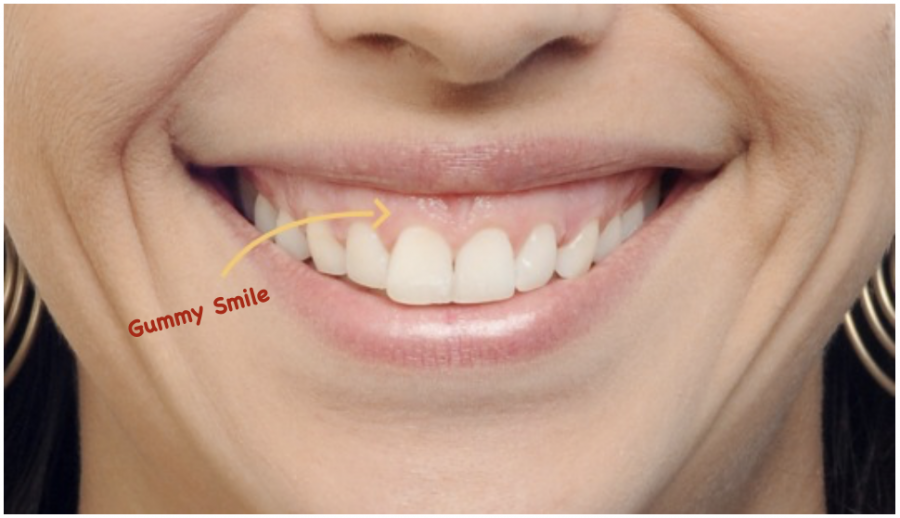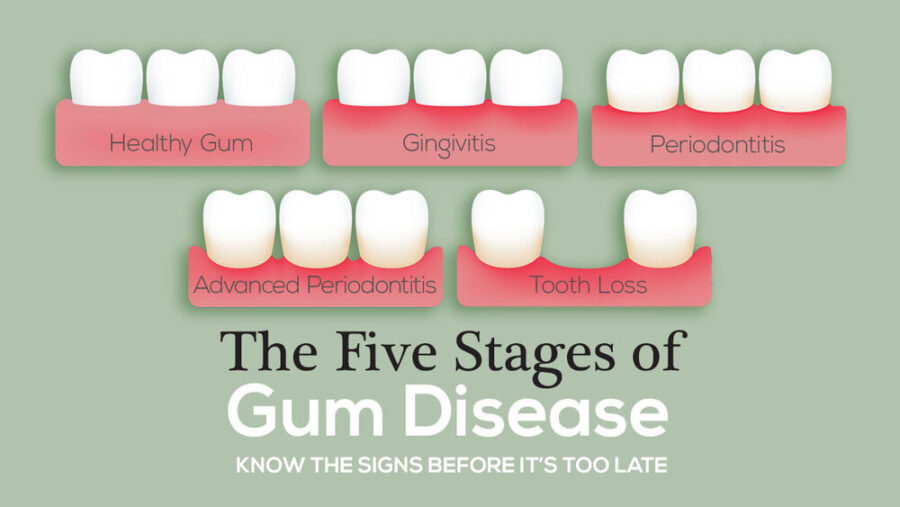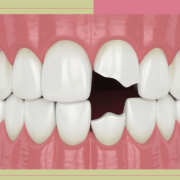A bump on the gums that appears mysteriously can be unpleasant and perplexing. But have no fear—this is just the beginning of our trip into the world of oral health. We’ll discuss the common causes of that odd gum lump in this blog, along with some easy solutions. Together, let’s dive into a dialogue that eliminates dental jargon and offers you clear-cut, practical advice. Gaining control of your dental health starts with understanding the “bump on gums” issue. Come along with me as we explore the world of dental oddities.
What is a Bump on Gums?
Any abnormal protrusion or swelling on the gum tissue is referred to as a bump on the gums. These lumps may be accompanied by symptoms like discomfort, soreness, or inflammation. They can also differ in size, shape, and color.
Types of bumps:
White Bump on Gums: This type of bump typically appears as a small, white, or pale-colored protrusion on the gum tissue. It may indicate various issues, such as canker sores, oral thrush, or even dental cysts.
Small Bump on Gums: A small bump on the gums can be caused by a range of factors, including trauma, localized infection, or the presence of an oral cyst or tumor.
Painless Bump on Gums: Not all bumps on the gums are painful. Some may be painless but still warrant attention, as they could indicate underlying dental problems or oral health issues.

Potential Causes:
Infection: Bacterial or viral infections can lead to the formation of bumps on the gums. These infections may result from poor oral hygiene, gum disease, or conditions such as oral herpes.
Trauma: Trauma to the gums, such as accidental injury or irritation from sharp objects, can cause localized swelling or the formation of a bump.
Oral Hygiene Issues: Inadequate oral hygiene practices, such as infrequent brushing and flossing, can lead to the buildup of plaque and bacteria along the gumline. Over time, this can result in inflammation, infection, and the development of bumps on the gums.
Symptoms Associated with a Bump on Gums
- Pain or discomfort: A bump on your gums may cause pain or discomfort, ranging from mild to severe. This discomfort can be constant or intermittent, depending on the cause of the bump.
- Swelling and Inflammation: Inflammation and swelling around the bump area are typical signs of irritation or infection. Your gums may appear red, swollen, and tender to the touch.
- Bleeding: If you experience bleeding from the bump or when brushing and flossing around it, it could indicate gum inflammation or injury to the gum tissue.
- Changes in Gum Texture: The texture of your gum tissue may change in the area of the bump. You might notice a raised area, a lump, or a change in the smoothness of the gum surface.
- Presence of pus or drainage: In cases of infection, the bump may produce pus or discharge. This can be a sign of an abscess or localized infection within the gum tissue.
Importance of Seeking Professional help
Dentists possess the necessary skills to precisely identify the reason behind the lump on your gums. Finding the root of the problem is crucial to treating the condition effectively and averting complications. Better results can be achieved with early detection and treatment.
If the condition is dealt with right away, it can be stopped from getting worse and possibly leading to more serious oral health problems later on. After determining the reason behind the hump, your dentist can create a customized treatment plan that meets your individual requirements. This could involve hiring a cleaner, taking medicine, or implementing other strategies to deal with the underlying problem.
Diagnostic Procedures used by Dentists
Dentists visually inspect the bump and surrounding gum tissue to look for signs of inflammation, discoloration, or other abnormalities. Using a periodontal probe, dentists measure the depth of any pockets or gaps between the gum tissue and teeth. This helps assess gum health and detect signs of gum disease.
Dental X-rays may be taken to obtain detailed images of the underlying bone structure and identify any hidden issues, such as abscesses or bone loss. In cases where the cause of the bump is uncertain or if oral cancer is suspected, a biopsy may be performed. During a biopsy, a small sample of tissue is taken from the bump and sent to a laboratory for analysis.
Potential Complications
Risks of ignoring a bump on the gums:
Ignoring a gum bump can cause a number of issues, chief among them being the possibility that the bump’s underlying cause will go untreated. Certain lumps might be harmless, while others might point to a more serious underlying issue that needs to be treated. If people don’t get medical help right away, they run the danger of making the issue worse and maybe developing more serious issues.

Potential for infection and spread:
One of the main risks of leaving a lump on the gums untreated is the potential for infection. Gum bumps can serve as a haven for bacteria, which, if ignored, can result in systemic illnesses or even more localized conditions like gum abscesses. Furthermore, neglecting to treat an infectious illness like gum disease or an oral infection that is causing the bump could lead to the infection spreading to nearby tissues or even other regions of the body.
Impact on oral health and overall well-being:
Ignoring a bump on the gums can have a major impact on your general health and oral health. Untreated dental disorders can make pre-existing oral health conditions like tooth decay or gum disease worse. In addition, speaking, eating, and general quality of life may all be negatively impacted by the bump’s pain or discomfort. Diabetes, respiratory infections, and cardiovascular problems have all been linked to untreated dental conditions. This emphasizes how critical it is to treat gum recession as soon as possible in order to protect oral and systemic health.
Treatment Options
Non-invasive treatments for minor bumps:
Non-invasive treatments could be enough to take care of tiny gum lumps. Usually, the goal of these therapies is to deal with underlying issues like irritation or inflammation. Non-invasive therapy examples include:
- Topical medications: Dentists may prescribe antimicrobial or anti-inflammatory gels or mouthwashes to reduce swelling and promote healing.
- Oral hygiene improvements: Recommending improved oral hygiene practices, such as regular brushing, flossing, and mouthwash use, can help reduce bacterial buildup and alleviate symptoms associated with minor bumps.
- Lifestyle modifications: Advising patients to avoid certain habits or substances that may aggravate gum tissue, such as smoking or consuming acidic foods and beverages, can aid in the healing process.
Surgical Options for Larger or Persistent Bumps:
If the gum lumps are more numerous, larger, or do not improve with non-invasive therapy, surgery might be necessary. To release pressure and drain fluid from cysts or abscesses, creating lumps on the gums, a dentist may do a small surgical operation. A biopsy may be done to take a sample of tissue for additional analysis if a bulge is thought to be a sign of a more serious ailment, such as a benign tumor or mouth cancer. Sometimes, to treat underlying gum disease or structural problems causing gum bumps, surgical treatments like gum grafting or periodontal surgery are necessary.
Importance of personalized treatment plans:
Since each person has different needs when it comes to their dental health, the value of individualized treatment strategies cannot be overemphasized. When treating gum bumps, a one-size-fits-all method could not adequately address the underlying cause or take the patient’s unique needs and preferences into account. Treatment objectives, the degree of the bump, any underlying medical issues, the patient’s oral health history, and other variables are all taken into consideration in personalized treatment plans. Dentists can guarantee the best possible outcomes and optimize outcomes by customizing therapy to each patient’s needs.
When to See a Dentist?
Signs indicating the need for professional evaluation:
In cases where the gum bulge resolves spontaneously or continues to enlarge over time, an underlying problem may need to be addressed. A dentist should be consulted if there is any pain or discomfort related to the bump, particularly if it makes it difficult to eat, speak, or maintain good oral hygiene.
If the lump changes in texture (becoming hard or ulcerated) or color (becoming red or white), it can be a sign of a more serious problem that needs to be looked into further. A dentist should examine any bleeding or discharge from the gum bump since it may indicate an infection or other underlying pathology.
Additional symptoms like fever, enlarged lymph nodes, or foul breath could point to a systemic infection or inflammation that needs to be evaluated by a dentist right once.
Dr. Chirag Chamria’s recommendations:
Regular dental exams enable the early detection of gum lumps and other oral issues before they worsen. For the prevention of gum disease and other dental problems, Dr. Chamria could advise flossing frequently, brushing your teeth twice a day, and using mouthwash with antimicrobials.
Maintaining a healthy lifestyle can help to maintain oral health in general. This includes avoiding tobacco products, eating a balanced diet low in sugary and acidic foods, and drinking plenty of water. When patients are aware of proper oral hygiene practices, they can take an active role in maintaining their oral health. They also learn the importance of scheduling dental appointments in advance and the early warning indicators of tooth issues.
Conclusion
In conclusion, we have examined the subtleties of gum bumps, comprehending their kinds and their reasons. Most importantly, professional assessment is necessary if there are persistent bumps, pain, or changes. Early intervention is crucial. Our manual emphasizes the critical need of preventive dental care and is enhanced with insights from Dr. Chirag Chamria. His main recommendations are for routine examinations, careful dental hygiene, and a healthy lifestyle. Dr. Chamria’s observations highlight the importance of getting expert care and support the saying that prompt and careful dental care is the first step toward a healthy smile.






